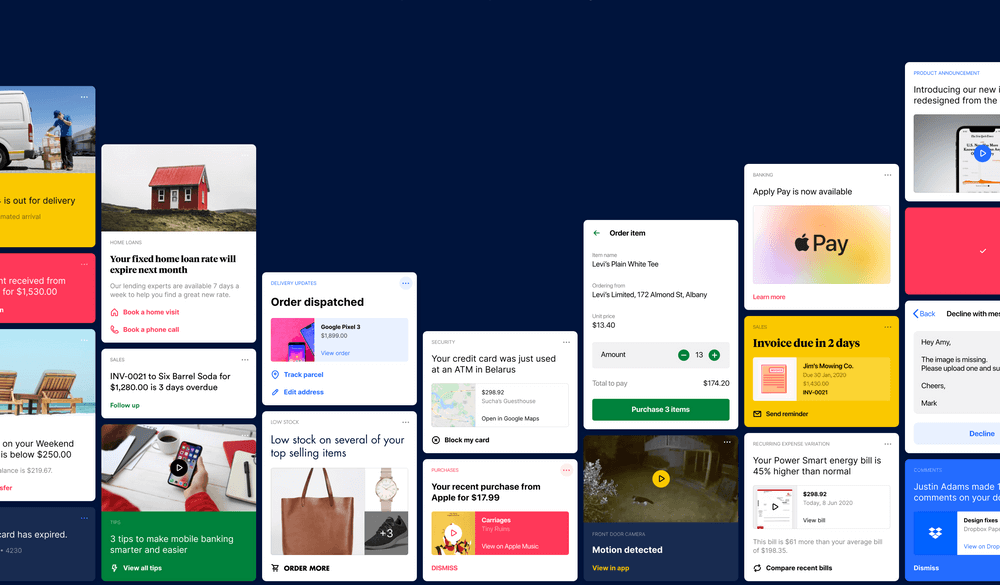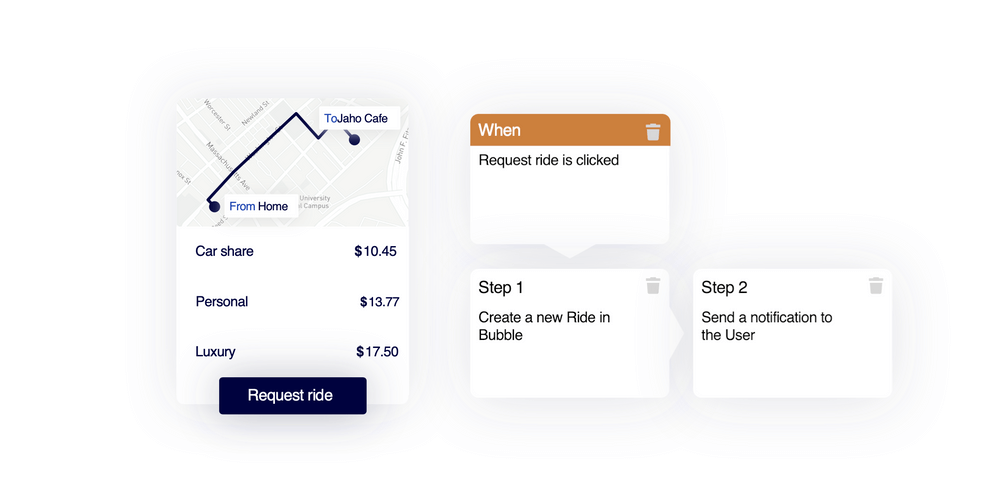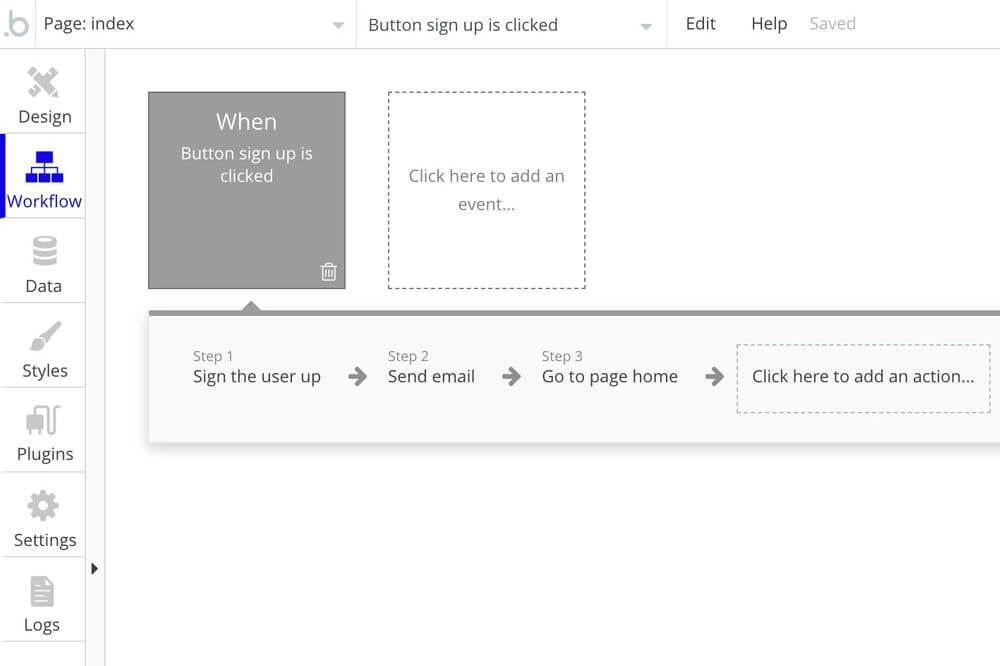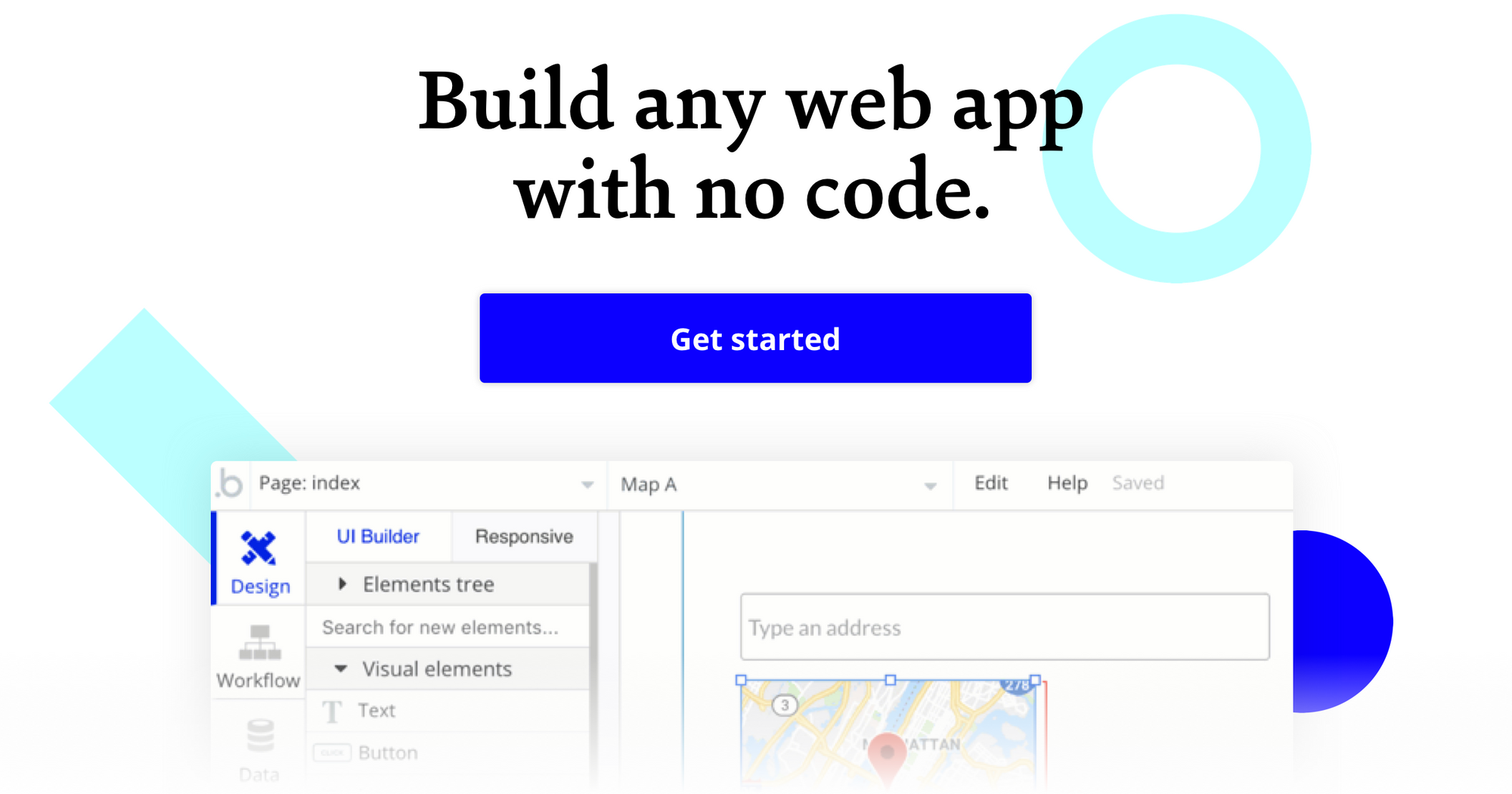At Bubble, we empower entrepreneurs and venture enthusiasts to create their ideas without code. We explore and review the many app-building tools and softwares to give our readers an educated and researched review on each product.
What is Atomic?
Atomic is a low-code, front end development platform for web and mobile apps that transforms your data into action cards. The platform provides a card-based approach to the front-end user interface, through action cards that are traceable, and secure. With Atomic, you can replace legacy SMS, upgrade in-app messaging, and reduce reliance on marketing channels to engage current customers.
Atomic features clean and efficient APIs, highly customizable SDKs, and a powerbench approach. Atomic APIs enable your developers to create, send, and manage action cards. The SDKs control action cards inside your app and adapt to different platforms like iOS, Android, and web applications. Atomic's cloud-based management system enables your product team to design cards, analyze real-time analytics, and manage work flow.

Action cards can be customized to target specific users and can be supported by out-of-app notifications to deepen engagement with customers. For example, action cards can provide notifications, forms, redirects and real-time data to your customers. Your users can also control notifications through snoozing, muting, and tuning their individual preferences. The cards blend into your existing app and design system, and adapts to maintain a unified user experience across your platforms.



Atomic enables your users to have more control through personal notification settings. Users can snooze, mute, and time notifications.
Who is Atomic For?
Atomic is for anyone looking to build more efficient user experiences for mobile and web apps. The platform is helpful for developers to deploy faster, reduce code complexity, and relieve the pressure on cross-platform delivery. Product teams may also find Atomic useful to rapidly increase in-app engagement.
Atomic is useful for your if you’re looking for a low-code, cloud based platform, and are interested in surfacing actionable notifications to your customers inside your existing app.
Atomic Cost and Pricing
(Pricing USD model evaluation: August, 2020)
Atomic does not currently list pricing on the website. You can request a demo by inputting your work email, or you can email Atomic directly at [email protected].
Atomic vs. Bubble: A Comparison
How does Atomic compare to Bubble?
Similarities between Atomic and Bubble:
Both Atomic and Bubble enable teams to rapidly create and ship front-end app functionality without the need for front-end code releases.
Both enable you to customize the UI and UX.
Both feature a robust and secure infrastructure on a cloud system.
Both provide complete data security.
Both provide responsive platforms for iOS, Android, and Web devices.
Both provide server maintenance, infrastructure, and operations.
Both feature SDK’s and API’s to reduce complexity, increase deployment speed, and boost functionality.
The key differences between Atomic and Bubble are:
Function- Atomic turns your data into action cards and then surfaces those cards inside your app. You can create actionable notifications that go to your customers within your existing apps, and your customers can customize notification preferences. It requires a combination of no code and low code to design, send, and manage action cards. Bubble is a no-code visual programming app that enables you to design, develop, and launch interactive, multi-user apps for desktop and mobile web browsers.
Features- Atomic's main features are the action cards, which are actionable pieces of UI that can be surfaced inside your existing apps. These cards can be customized by specific users and supported by out-of-app notifications. With Bubble, you can build-from-scratch, prototype, create interactive, multi-user apps for desktop and mobile web browsers, customize a responsive website, install plugins and templates to your app, and launch within minutes. Bubble includes all the tools you need to build a site like Facebook or Airbnb, and you can also build a native mobile app with the no-code platform.


Atomic cards provide surface insights to help you engage with your customers. Actions cards replace legacy SMS, upgrade in-app messaging, and reduce reliance on marketing channels.
Customization- Atomic focuses more on the customization of action cards and user experience. With Atomic, you can customize the SDKs control action cards and the surface notifications that your users will receive on your apps. Atomic allows you to extend the capability of your digital channels by giving your users more power to control notification preferences. You can also customize the surface notifications based on target audience. Bubble’s no-code platform allows you complete customization of the user interface and experience. You can customize URL text and titles, site maps, and metatags to manage and grow your enterprise. You can also implement complex payment features and third-party transactions for your web app.


Bubble's no code platform allows you to completely customize the user interface and experience.
Growth: Atomic focuses on engaging current customers through providing solutions for in-app notifications. You can replace legacy SMS, upgrade in-app messaging, and reduce reliance on marketing channels. Bubble features growth tools, like email, SEO, Google Analytics, and more to help users expand, engage, and measure.
Integrations- Atomic can be surfaced inside your existing apps. The action cards blend into your app and design system and adapt to maintain a unified user experience across your platforms. Atomic also features APIs that enable your developers to create, send, and manage action cards, as well as manage settings and access analytics remotely. Bubble provides two main APIs in every app, and integrates with thousands of third-party software including Parabola, GitHub, and Algolia to name a few.
Alternatives to Atomic:
Top alternative no-code or low code platforms or tools that allow you to build a no-code mobile development tool include:
Unqork if you’re looking to build a large enterprise that offers API integration, allows users to build and integrate front-end and back-end components, and provide a visual workflow editor.
If you're looking for a more collaborative, low-cost prototyping tool that features private and public plugins, more design features, auto-layouts, and the ability to access files anywhere with internet access, consider Figma's interface design tool.
Axure RP if you're looking to create wireframes, document for development, create powerful prototypes for your enterprise, and conduct user test on it, without writing a single line of code.
If you want to build a robust web app with complete design customization, user experience customization, scalable infrastructure, content and design templates, and support from an active user community, consider Bubble's no-code platform.
About Bubble
Bubble is a leader in the no-code movement. Bubble offers a powerful point-and-click web editor and cloud hosting platform that allows users to build fully customizable web applications and workflows, ranging from simple prototypes to complex marketplaces, SaaS products, and more. Over 400,000 users are currently building and launching businesses on Bubble - some have gone on to participate in top accelerator programs, such as Y Combinator, and even raised $365M in venture funding. Bubble is more than just a product. We are a strong community of builders and entrepreneurs that are united by the belief that everyone should be able to create technology.
Join the no-code movement today.

Disclaimer: The goal of these reviews is to provide an honest, practical, differentiated comparison of features and educate readers on tools in the no- code ecosystem so that you can evaluate how these services fit together and serve your needs.
Build your app on Bubble's Free plan. No need to upgrade until you're ready to launch your app.
Join Bubble




